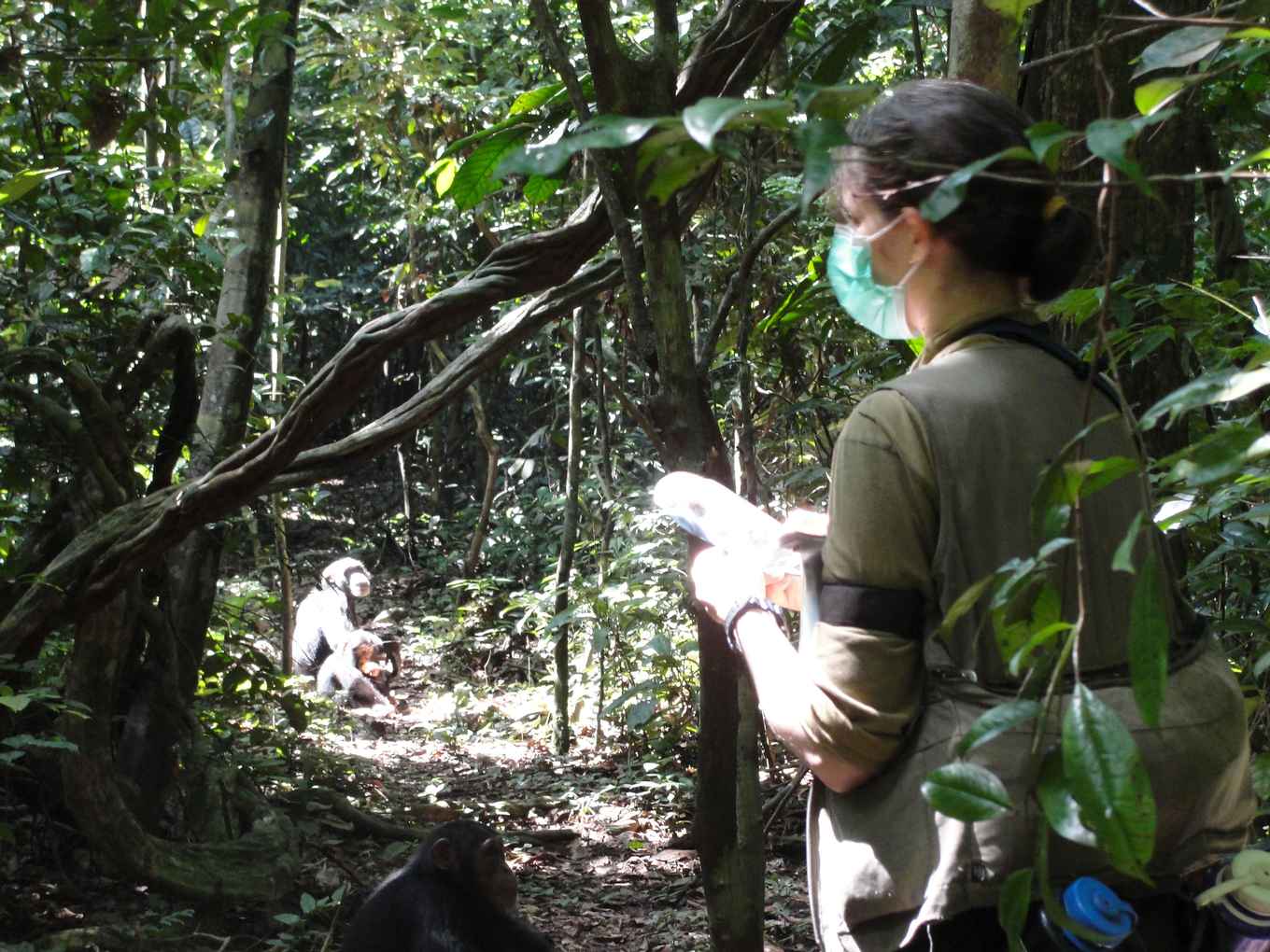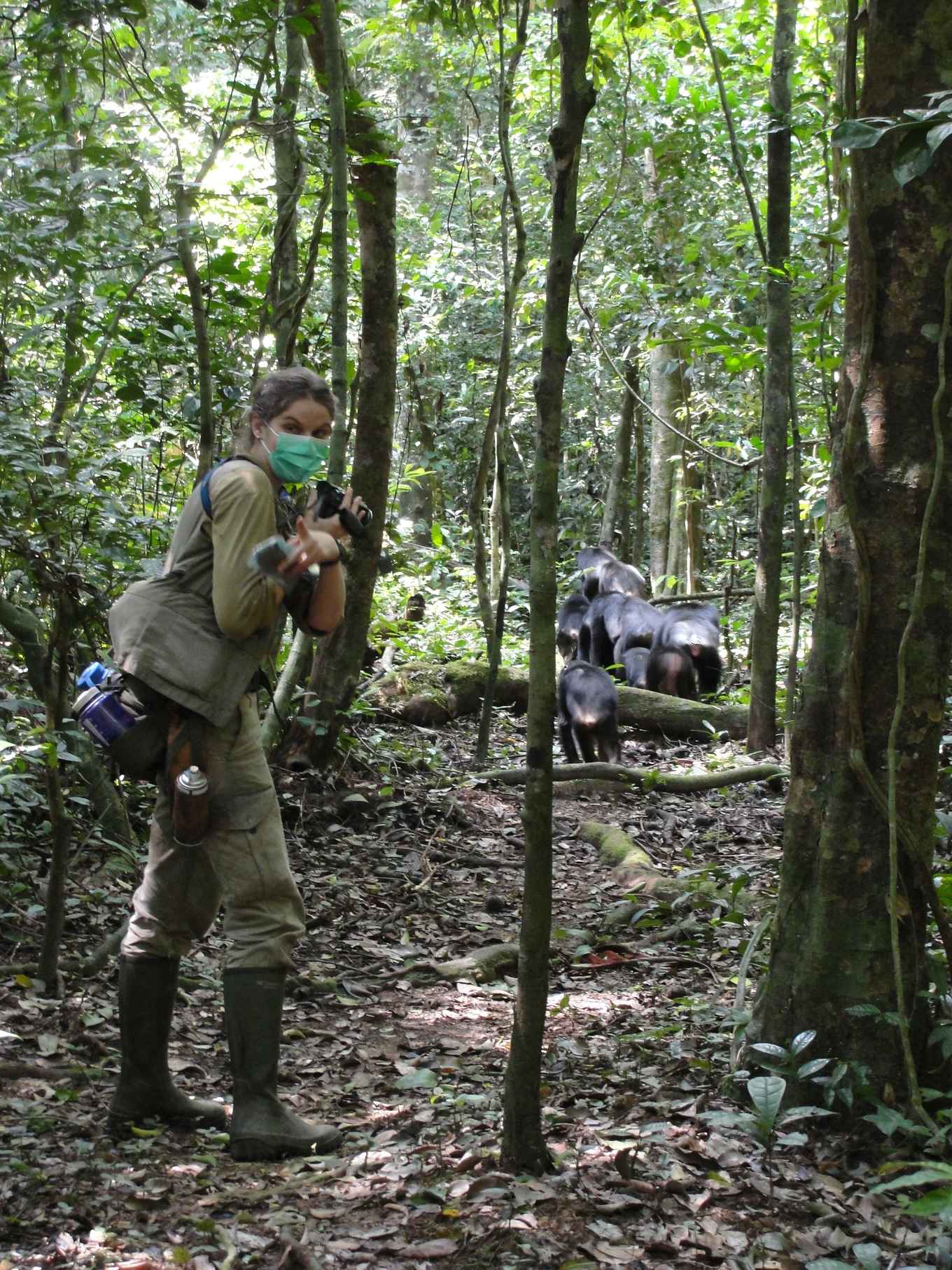Studying animal cognition in the wild – a new guideline
20 August 2019

Different types of cognitive abilities can lead to a variety of knowledge that can help an animal to find, access, and guard food and mates. One approach to gain insight into the evolution of such cognitive abilities is by inferring and comparing cognitive performances from observed behaviours across closely related species. In her latest paper Janmaat describes a set of different approaches, addressing where and how one can make such inferences in a variety of species, with the focus on primates.
Fieldwork versus captive-based research
While addressing the question of where and how cognition can be studied, the paper describes the advantages of field-based science as well as the challenges faced in captive-based experimental science. ‘My aim is not to devalue captive-based or experimental research. My aim is to make captive-based and experimental scientists think critically about the challenges of their approach and hopefully become more open to, or familiar with, the potential and advantages of observational fieldwork’, says Janmaat.
Janmaat was motivated to write the paper by a finding which suggested that the majority of primate cognition work is conducted with captive primates and that field work studies are rarely cited in reviews about primate cognition, suggesting an imbalanced distribution and diffusion of knowledge between the two fields.
Janmaat especially stresses the value of field work for obtaining insight into evolutionary function: 'If we really want to understand the evolution of cognition and human intelligence, we need to study not only whether our closest relatives do or do not use certain cognitive skills, but also the conditions in which animals employ these skills in daily survival in their habitat’.
In addition, she addresses the issue of plasticity of the brain and stresses the need to study the variation in cognition by conducting comparable studies in both captive and wild settings. This is because in the wild certain cognitive abilities, such as spatial mapping, are more likely developed to their full extent, due to a particularly high variety of social and sensory input and large-scale movement abilities, while other abilities, such as causal understanding, may be more developed in captive animals that have more ‘free time’ on their hands.
Lastly, Janmaat stresses the urgency of field studies as natural habitats: ‘The rapid decline of rainforest environments and primate populations that depend on them creates a high level of urgency to study primates in their natural habitats'.

A new guideline
In her paper Janmaat provides a five-step guideline for future data collection designs for scholars who want to investigate cognitive abilities in wild animals by observation and a synthesis of traditional and novel methods. She guides the reader through these steps by providing concrete examples from her own work on foraging cognition, such as future planning or intuitive statistics, in chimpanzee females in the Taï National Park, in Côte d’Ivoire, who she has been studying for the past 10 years.
In animal behaviour studies priority is often given to the recording of behaviours that the target animal performs, such as its visit to a food source, how long it eats, how many other animals are present, or whom it grooms. Recording when it does not perform certain behaviours can provide as valuable information about an animal’s expectations, and thus cognition, as recording when it does perform the behaviour. For example, recording when a chimpanzee decides not to approach or inspect a food tree in which she has fed the year before, can provide insight into her expectations of what she will find at that tree, as much as recording when she does approach.
‘What is important to always remember is that every approach has benefits and challenges. Consequently, using complementary approaches is more likely to yield novel insights in primate cognition and move the field in exciting new directions. Perhaps then, we can even make the ‘impossible’ possible’, Janmaat concludes.
Publication details
Karline R. L. Janmaat. What animals do not do or fail to find: A novel observational approach for studying cognition in the wild. Evolutionary Anthropology, August 2019. https://doi.org/10.1002/evan.21794